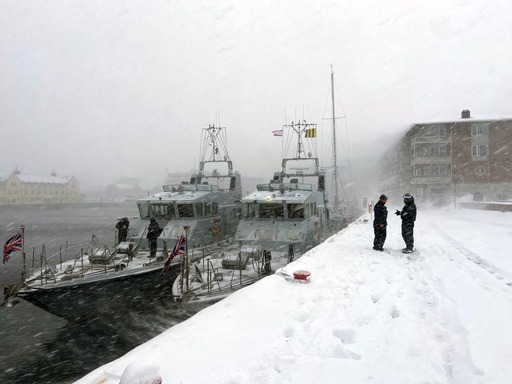The smallest ships in the Royal Navy head off on their longest deployment in their 35-year history – deeper into the Arctic than ever before.
Four coastal forces craft leave Portsmouth at the beginning of February for a four-month mission – mostly in the fjords of Norway.
While away the fast patrol boats, each crewed by just five sailors, will go further north than any of their class – above the 70th Parallel – as they work with the Norwegian Navy and Norwegian Coastal Ranger Commandos and support key international exercises.
In the past few years, the Coastal Forces Squadron has evolved from a unit of 14 boats which was mostly used to give university students a sample of life in the Royal Navy to a force returning to its WW1/WW2 roots, specialising in small, fast boat operations, supporting front-line RN and NATO training and missions around the UK and northwest Europe.
Last year the boats spent several months in Norway. Commander Richard Skelton, the Coastal Forces’ Squadron’s Commanding Officer, said his team would build on those experiences for the return to Scandinavia.
“This deployment marks the next step of the Coastal Forces Squadron journey, moving away from a purely training role into an operational one,” he explained.
“Gone are the days of solely supporting university training. There’s a clear intent to return to our roots and once again become experts in small boat warfare. The squadron has a new way of working, operating together out of select locations, focused on small task groups, conducting coastal warfare.
“Norway is a key ally, they’re also experts at operating small craft in the harshest of environments, so it’s brilliant to be able to go and share our knowledge and test our tactics.”
HMS Biter, Blazer, Exploit and Trumpeter will leave Portsmouth in early February, making their way around 1,750 miles via the Netherlands, Germany and Denmark, eventually reaching their destination north of Tromsø in time for the large-scale international winter exercises Joint Viking and Nordic Response.
In April the boats will join the Norwegian Navy and five Royal Navy Wildcat helicopters in the waters around Bergen as the two allies develop small boat tactics – and to allow helicopter crews hone their skills in taking out such threats on Exercise Tamber Shield.
All four boats are small (just 54 tonnes, 68ft long), fast and nimble (20 knots plus) but not designed for open waters and their open bridges are completely exposed to the elements. The average temperature is expected to be -6 Celsius, but even in March it can drop to around -30 in the High North.
“It’s no small feat to take a 20-metre long plastic patrol boat, with an open bridge 1,500 miles north into the Arctic Circle and not only survive there but operate,” said Commander Skelton.
“The ship’s companies have worked hard to prepare and will be challenged by not only the environment but also the tasking. Ultimately it’s the sort of adventure you join the Royal Navy for.”
Petty Officer Timothy Scott, HMS Biter’s marine engineer officer, added: “Deploying to over 70 degrees North where the average temperature will be below zero presents an exciting new challenge for the squadron.
“Building on last years’ experience we will rise to a new challenge in the harsh Arctic environment of Norway and continue the journey of returning to out roots of small boat coastal warfare.”




